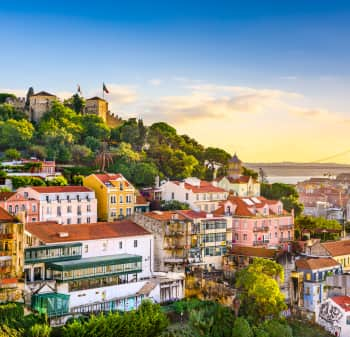
Running Events in the Guarda District
unsplash.com/@asfotosde1enorme
Upcoming Races in the Guarda District




Discover the District of Guarda
Amidst majestic mountains and historic villages, experience the authentic Portugal.
Located in the northeast of Portugal 🇵🇹, the district of Guarda is a region defined by its diverse landscapes and rich cultural heritage. With its 141,261 inhabitants, it spans an area of 5,518 km², making it the 7th largest district in the country. Surrounded by towering mountains ⛰️ and lush valleys, Guarda is a land of contrasts, blending wild nature, medieval villages, and ancient traditions.
Its capital, Guarda, perched at an altitude of 1,060 meters, is the highest city in Portugal, earning it the nickname “Cidade mais alta”. Its unique climate and mountainous setting make it a special destination for nature and heritage lovers 🏞️.
The district of Guarda is home to a significant portion of the Serra da Estrela Natural Park, the largest and highest in mainland Portugal. This mountain range is renowned for its glacial valleys, dense forests 🌲, and winding rivers 🚣♀️. Among its peaks, Torre rises to 1,993 meters, making it the highest point in mainland Portugal 🇵🇹. In winter, it becomes a popular ski resort 🎿, while in summer, hiking trails 🥾 attract nature enthusiasts.
Numerous trails explore the typical mountain villages of the Serra da Estrela, including Loriga, Alvoco da Serra, Lapa dos Dinheiros, Valezim, and Cabeça. These villages offer a complete escape and provide an authentic glimpse into rural Portugal.
The city of Guarda, the district's capital, is a living testament to Portuguese history. Its historical center is dominated by the Sé Catedral de Guarda ⛪, a majestic Gothic cathedral whose construction spanned over 150 years. Designed during the reign of D. João I and completed under D. João III 👑, it combines Gothic and Manueline (a uniquely Portuguese style 🇵🇹, best exemplified by the Belém Tower in Lisbon) styles and is one of Portugal’s most iconic churches. Be sure to visit the castle of Guarda, perched at 1,056 meters, offering stunning views of the region.
Beyond the Serra da Estrela, the district of Guarda boasts other exceptional natural sites. The wooden walkways of the Mondego, located in the natural park, offer a unique immersion into this preserved environment 🏞️. This 11.5 km trail follows the Mondego river, connecting the village of Videmonte to the Caldeirão dam. Suitable for all levels, it also offers shorter route options for families. The region is also home to biodiverse natural areas like the Serra da Marofa, providing a perfect setting for hiking and observing wildlife and flora.
The district of Guarda is also rich in traditions and gastronomy. A must-see is the famous Carnival of Guarda 🎭, held annually at the end of February. While excessive alcohol consumption is harmful to health, be sure to sample the wine from the Beira Interior wine region 🍷.
Of course, as runners, we couldn't talk about the district of Guarda without mentioning the best races around. As you might expect from this mountainous area, there are primarily trail races (and even ultra-trail) events of all kinds. One of the most famous is the Trail da Raia. This cross-border race with Spain 🇪🇸 follows ancient smuggling routes that have marked the history of this region. We also recommend the Estrela Grande Trail, which traverses the peaks of the Serra da Estrela, and the Oh meu Deus (also known as the Serra da Estrela Ultra Trail). Finally, here's a tip for road running enthusiasts! The Estrela Road Challenge features its own Semi-Marathon and Marathon with a challenging elevation gain of 1500m+ that turns into a downhill for the last 21 kilometers of the marathon distance (we admit it’s a bit of a tricky one 😅).
If you're looking to escape and explore beyond Portugal, Spain and Castile and León are just a step away.
Race Calendar for the Guarda District
These nice race spots should get your attention
This could also be of interest to you
The new generation platform that allows all runners, whatever their level, to (re)discover the French territory and heritage, by finding the races that suit them.
Made in France, between Lyon and Nantes



